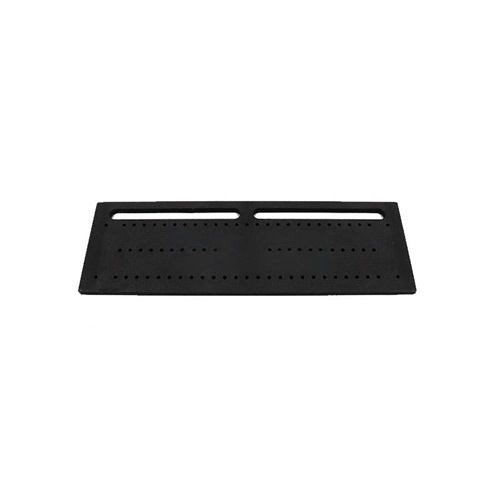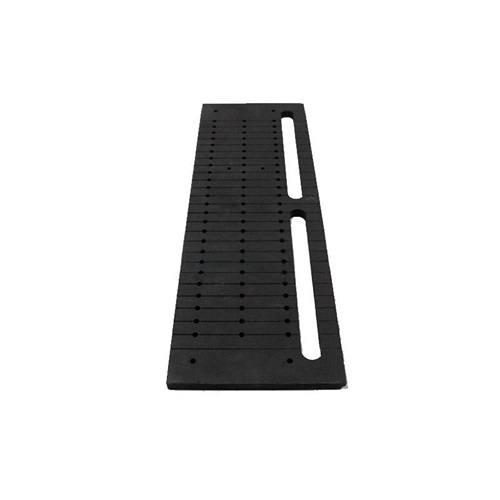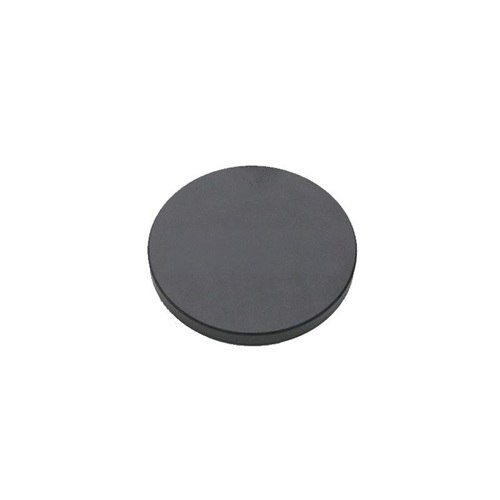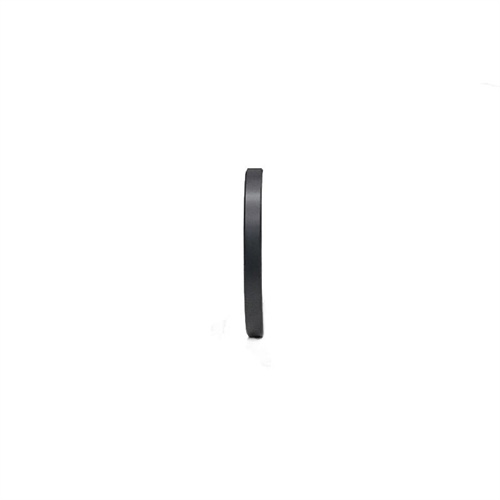What are the specific applications of silicon carbide ceramic binding heads in the aerospace field
In the aerospace industry, the manufacture of every component is related to absolute safety, extreme performance and amazing reliability. From the airliner flying in the blue sky to the spacecraft exploring the universe, it is supported by numerous cutting-edge materials and precision processes. As a key high-performance tool, silicon carbide ceramic binding head plays an indispensable role in chip packaging, especially in the manufacturing of aerospace electronic equipment, although it is not remarkable in the whole machine.

What is a silicon carbide ceramic binding head?
Before we understand the application, we must first understand what it is.
Binding head is the core component of chip packaging equipment (bonding machine), and its function is similar to a highly precise “manipulator”. It accurately picks up tiny chips on the production line, places them in the specified position, and connects the metal contacts on the chip to the external circuit by applying appropriate pressure, ultrasonic wave and heat (this process is called “wire bonding” or “chip mounting”).
Silicon carbide ceramic is an ideal material for making this kind of binding head. It is an advanced ceramic material made of ultra-fine SiC powder by high-temperature sintering, which integrates a variety of excellent properties:
High hardness and high wear resistance: second only to diamond, it is not easy to wear after long-term use, and can always maintain high dimensional accuracy.
High thermal conductivity: the thermal conductivity is much higher than that of most metals, and it can transfer the heat required for bonding quickly and evenly.
Excellent thermal stability: almost no thermal expansion deformation under high temperature environment, ensuring the accuracy of high temperature processing.
Low density (light weight): lighter than metal, easy to move at high speed and high frequency, reduce equipment inertia and improve production efficiency.
Good chemical inertness: corrosion resistance, no reaction with most chemical substances, long service life.
It is these inherent excellent characteristics that make the silicon carbide ceramic binding head perfectly meet the stringent requirements of aerospace electronics manufacturing.

Specific application scenarios in the aerospace field
Aerospace electronic systems are required to work stably in extreme environments. The standard of chip packaging technology is much higher than that of consumer electronics. Silicon carbide ceramic binding head is mainly used in the following key links:
- chip packaging of aircraft engine control system (FADEC)
Application Description: the “brain” of modern aero-engine is a full authority digital engine controller. It is composed of several highly reliable processors, memories and power modules. The binding head is responsible for accurately bonding these core chips to ceramic or special resin substrates.
Problems solved:
Coping with high temperature: the ambient temperature near the engine is very high, and the binding head itself must be resistant to high temperature and have stable performance to complete the packaging task.
Ensure long-term reliability: any failure of FADEC system may be catastrophic. The high precision and consistency of the binding head ensure that each solder joint is firm and reliable, and can withstand continuous high-frequency vibration and thermal cycle impact. - manufacturing of flight control system and Avionics System
Application Description: a large number of high-power and highly integrated chips (such as CPU, FPGA, ASIC) are integrated on the circuit board (PCB) of core avionics equipment such as flight management computer, inertial navigation system, radar signal processing unit, etc. These chips have a large number of i/o contacts and small spacing (fine spacing bonding), which requires very high precision of binding head.
Problems solved:
Ultra precision machining: the extremely low wear rate of the silicon carbide binding head ensures that the shape of its tip remains unchanged for a long time. It can stably bond gold wires or copper wires with a diameter of only tens of microns, avoiding short circuit or faulty soldering.
Management of bonding heat: the high thermal conductivity of the binding head ensures that the heat can be accurately and quickly transferred to the solder joint to form a high-quality intermetallic compound connection without damaging the temperature sensitive chip due to heat accumulation. - assembly of electronic equipment for spacecraft and satellite
Application Description: the electronic equipment used by satellites, spacecraft, detectors and other spacecraft must be able to withstand the severe vibration during launch, the extreme temperature alternation (-150 ° C to +150 ° C) in space and high-energy radiation.
Problems solved:
Coping with extreme temperature Alternation: the extremely low thermal expansion coefficient of silicon carbide ceramics ensures that under the huge temperature difference in space, the size of the binding head itself is almost unchanged, and the bonding accuracy will not be affected due to “thermal expansion and cold contraction”, so as to produce a solid solder joint that can adapt to the space environment.
Pursuit of lightweight and reliability: the aerospace industry is extremely sensitive to weight. The lightweight of the binding head itself helps to improve the movement efficiency of the equipment, and the high reliability of its manufacturing connection directly determines the on orbit life and mission success rate of the spacecraft. - production of Military Avionics System
Application Description: the radar, electronic warfare (EW) system and communication equipment of military platforms such as fighter, reconnaissance aircraft and UAV have more severe working environment and higher requirements for the anti impact and anti vibration ability of electronic components.
Problems solved:
Ensure wartime stability: military equipment is required to avoid electronic system failure under any extreme mobile overload and vibration conditions. The uniform and high-strength solder joint made of silicon carbide binding head is the internal quality guarantee.
Maintain high-intensity production rhythm: military requirements may require rapid production and maintenance. The long service life and high stability of the binding head reduce the downtime and tool change time of the production line, and ensure the consistency of manufacturing efficiency and quality.

Core value of silicon carbide ceramic binding head
To sum up, the silicon carbide ceramic binding head has solved the following core pain points for the aerospace industry:
Precision and consistency problem: with its extraordinary wear resistance, it ensures that the micron precision can still be maintained after millions of bond cooperation, and greatly improves the yield and consistency of products.
Extreme environmental adaptability problem: with excellent thermal stability and chemical inertia, it can work stably in the production environment of high temperature, high vibration and strong corrosion, and produce electronic products that can adapt to more extreme working environments.
Production efficiency and cost problems: the ultra long service life reduces the replacement frequency and maintenance downtime, and reduces the comprehensive production cost, which is of great significance for the production of expensive aerospace devices.
Reliability and safety problems: it is the cornerstone of manufacturing aerospace electronic products with “high reliability and zero defects”, directly related to the safety of aircraft and aerospace missions, and is an indispensable link in the aerospace quality assurance chain.

Although the silicon carbide ceramic binding head is small, it is a key technology node in the aerospace precision manufacturing field. It represents the perfect combination of material science and manufacturing technology, and is an important force to support the modern aerospace industry towards higher safety, higher performance and further deep space.
Brudeze Ceramics supplies and sells a wide range of high-quality quartz glass, including alumina ceramics, zirconia ceramics, silicon nitride ceramics, aluminum nitride ceramics, silicon carbide ceramics, boron carbide ceramics, bioceramics, machinable ceramics, etc. We can meet the customization requirements of various ceramic products.
Tags: boron carbide ceramics
PREVIOUS:What are the applications of MACOR ceramic parts in the medical field
CATEGORIES
LATEST NEWS
- Petrochemical ceramic injec...
- Zirconia Ceramic Rod Custom...
- High-temperature resistance...
- What is the wear resistance...
- What is the hardness of cer...
- Aluminum oxide ceramic cust...
- What are the main aspects o...
- What are the mechanical pro...
- Thermal properties of zirco...
- What properties should be c...
